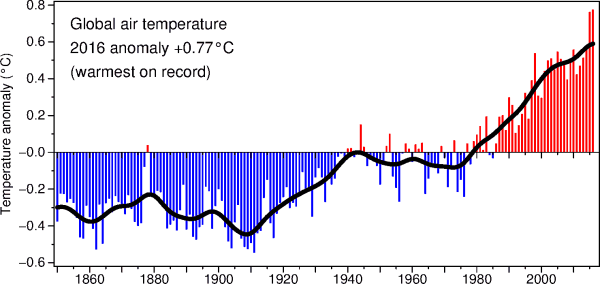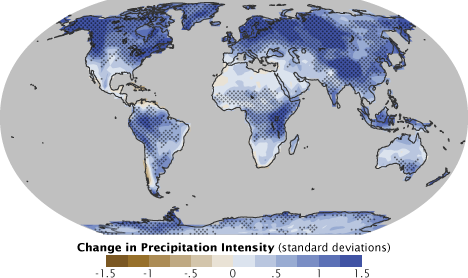Soil Erosion in the Future

The earth's climate is changing due to human influence. This will affect future soil erosion both directly and indirectly.
Direct effects:
- Shifts in the amount, timing and intensity of rainfall events
- Shifts in the severity and timing of wind blow events
- Changes in the timing of snowmelt.
Indirect effects:
- Land-use change driven by changed climate
- Changes in vegetative growth due to increased atmospheric CO2.

Predicting changes in future rainfall is not easy. Some areas are likely to experience increased rainfall amounts, others will have decreased rainfall. Any increases in rainfall at times when the soil is bare, due to agricultural activity, will result in more soil erosion. Rates of water erosion, respond to increases in rainfall in a non-linear manner, with disproportionately large increases in erosion resulting from relatively small increases in rainfall. Increased rainfall intensity, which is already being experienced in several parts of the world, will also worsen soil erosion problems.
Quantifying changes in future wind events is even more problematic. Also, future wind erosion will in some cases be influenced by shifts in rainfall patterns, as well as by changes in wind events, since dry soil is more vulnerable to blowing.
But the greatest challenge for future soil erosion managers and policy makers is likely to result from land-use change driven by climate change. Farmers are quick to adopt new crops when the opportunity arises. Adoption of crops which leave the soil unprotected at times of heavy rainfall will lead to greater erosion problems. Even small shifts in the timing of tillage operations can leave the soil more vulnerable as such times. Since the timing, amount and intensity of future rainfall is also liable to change, agricultural management to minimise future erosion risk will not be easy.
Knowledge gained about present-day soil erosion, and erosion in the past, will — of course — be a great help in tackling the problems of future soil erosion. There are, though, still large large gaps in our knowledge.
Dr David Favis-Mortlock, April 2025




